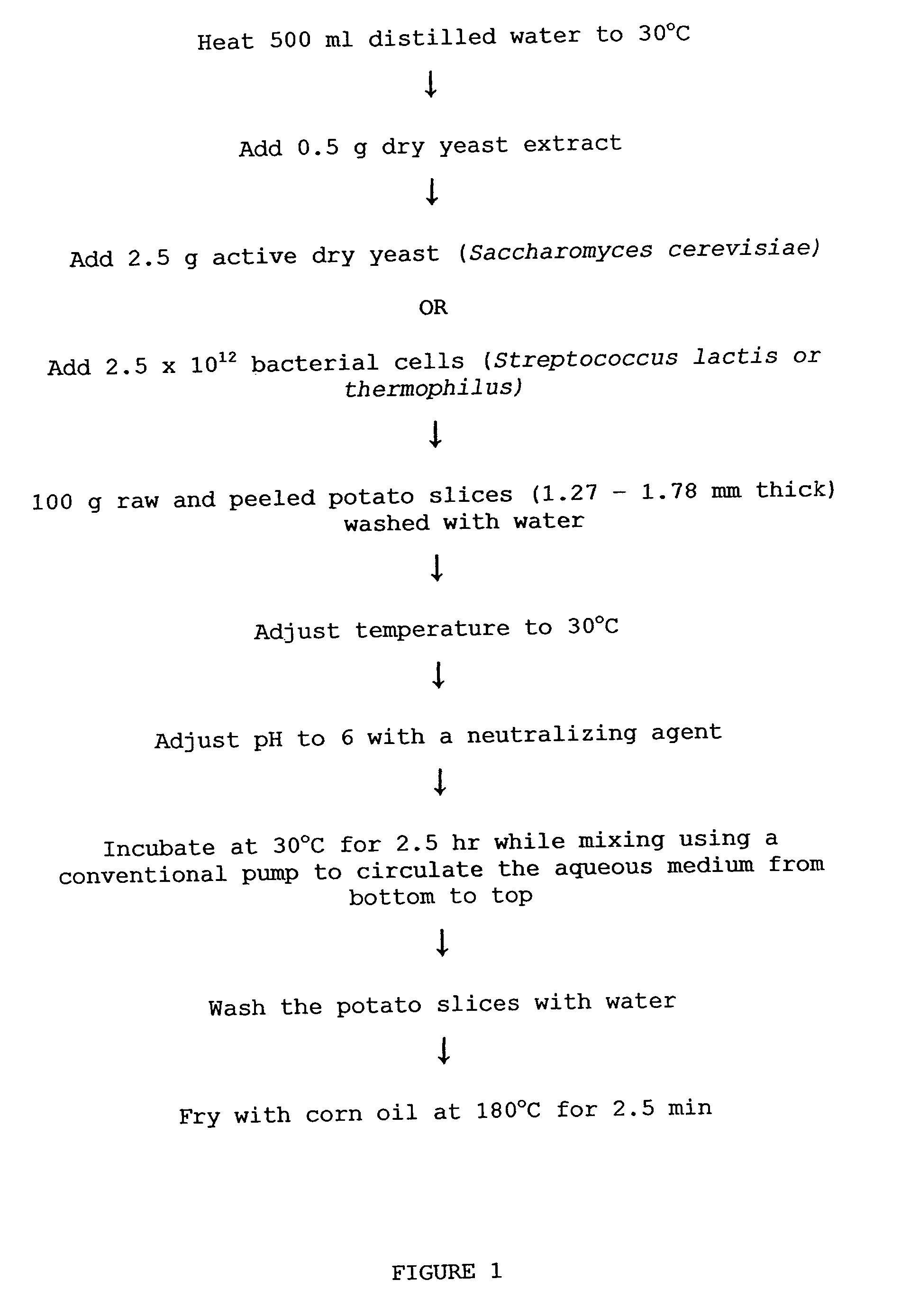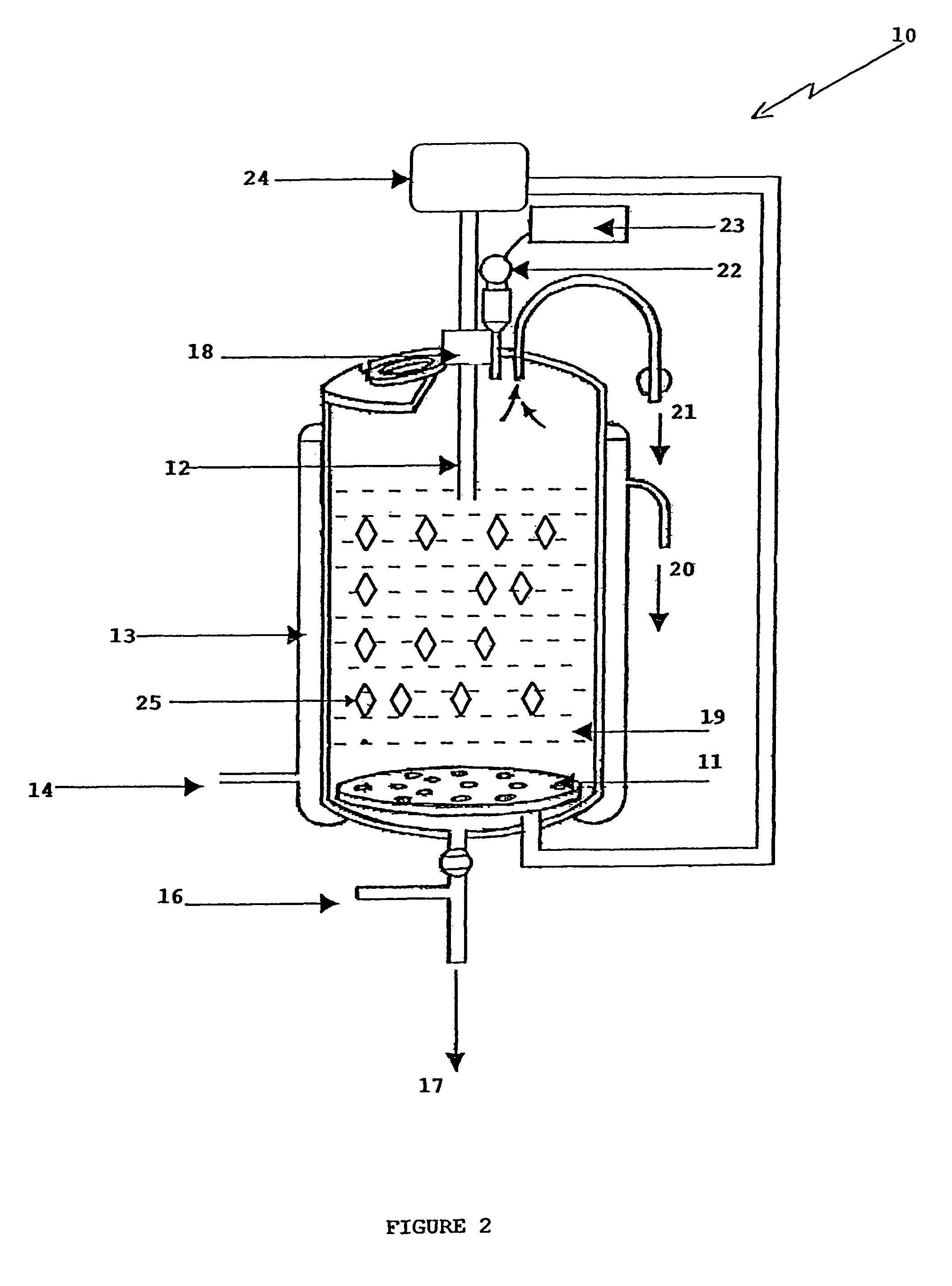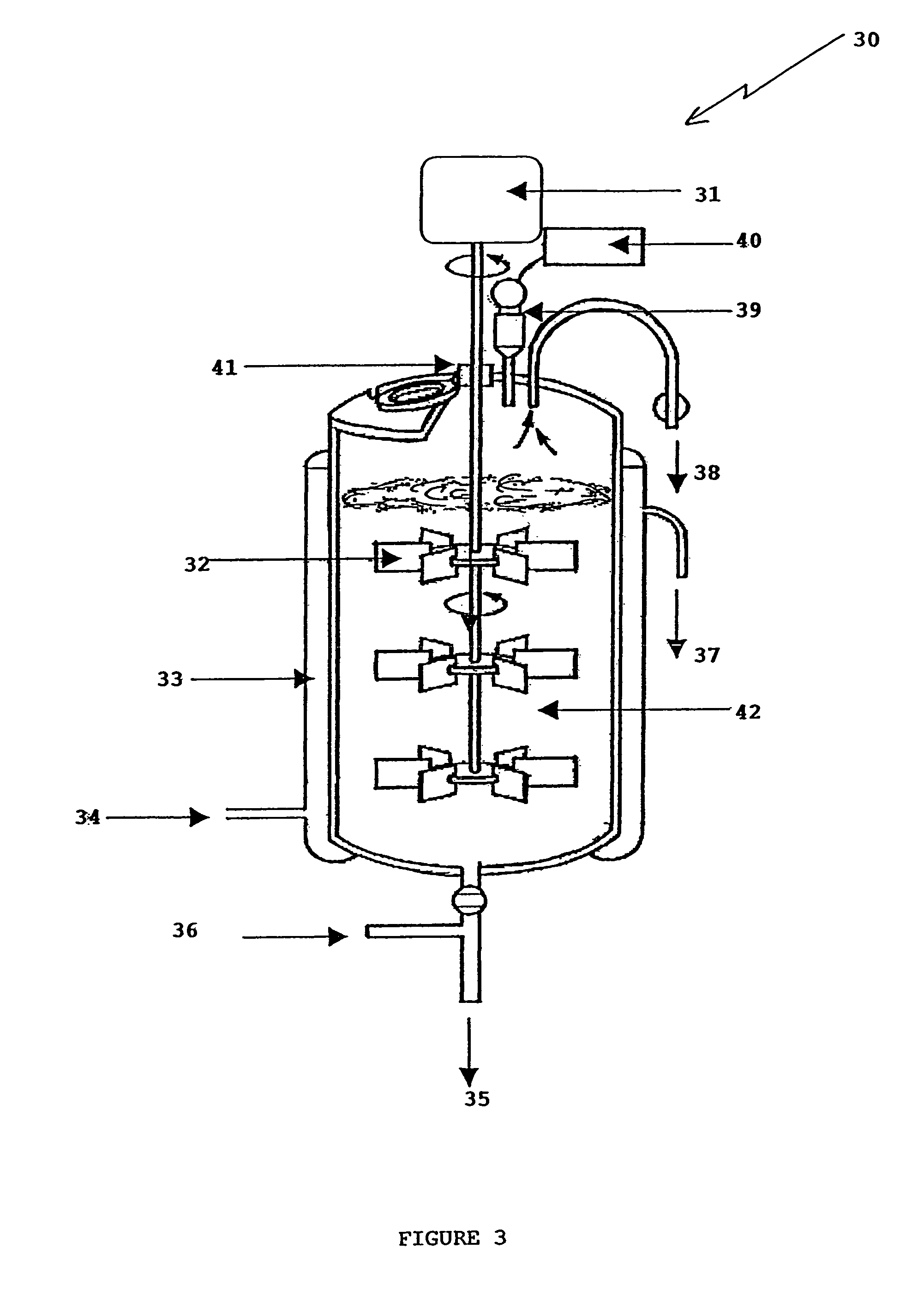Reduction of acrylamide formation in cooked starchy foods
a technology of starchy foods and acrylamide, which is applied in the direction of food preparation, fruit/vegetable preservation using acids, and glucose production, etc. it can solve the problems of damage to the central and peripheral nervous system, damage to the flavor and texture, and damage to the flavor and texture, and achieve the highest reduction of acrylamid
- Summary
- Abstract
- Description
- Claims
- Application Information
AI Technical Summary
Benefits of technology
Problems solved by technology
Method used
Image
Examples
example 1
[0029]A fermentation medium was prepared consisting of 500 ml distilled water heated to 30° C. and 0.5 g dry yeast extract. The 2.5 g active dry yeast (Saccharomyces cerevisiae) or 2.5×1012 bacterial cells (Streptococcus lactis or thermophilus) were added. A conventional pump was used with the fermenter which circulated the aqueous fermentation medium into and out of the mixing tank in a loop form to maintain a uniform medium. The washed raw potato slices (100 g) were added in a very quick succession. The aqueous medium was pumped out of the mixing tank through a strainer which prevented the potato slices from going through the pump to avoid any physical damages to the slices caused by the pump. The pH was adjusted to 6 using a pH-meter and neutralizing agent. The temperature during processing was maintained at 30° C. using steam. The processing time of the mixture was 2.5 hr. The sugars available were reduced by the fermentation as was the acrylamide factor upon frying of the potat...
example 2
[0030]The effect of varying microbial cell concentrations on the reduction of acrylamide formation in fried potato chips and the removal of acrylamide precursors (mono- and di-saccharides and others) prior to cooking was determined using the experimental conditions outlined in FIGS. 1 and 2, and reported in the following experiments in Tables 2 and 3.
[0031]
TABLE 2Effect of active dry yeast (Saccharomyces cerevisiae)concentrationsAcryl-amideYeastReduc-Mono & di-YeastTemp.ExtractSubstrateTimetionsaccharides(g)pH(° C.)(g)(g)(hr)(%)(%)0.56300.51002.5201.56300.51002.5242.56300.51002.51956300.51002.521106300.51002.516
The data suggest that the medium is saturated with yeast cells at the tested concentrations.
[0032]
TABLE 3Effect of bacterial cells (Streptococcus thermophilus)concentrationsBacterialYeastAcrylamide*Mono & di-(count)Temp.ExtractSubstrateTimeReductionsaccharidesCFU / mlpH(° C.)(g)(g)(hr)(%)(%)10 × 1086300.51002.54030 × 1086300.51002.55150 × 1086300.51002.56810 × 1096300.51002.570...
example 3
[0033]Temperature is a factor in a fermentation reaction due to its ability to: (1) change the rate of the reaction, and (2) inactivate the microbial cells. The effect of the reaction temperature on reduction of acrylamide formation in fried potato chips and the removal of acrylamide precursors (mono- and di-saccharides and others) prior to cooking was determined according to the experimental conditions outlined in FIGS. 1 and 2, and reported in the following experiments in Tables 4 and 5.
[0034]
TABLE 4Effect of incubation temperature using active dry yeast(Saccharomyces cerevisiae)Acryl-amideYeastReduc-Mono & di-YeastTemp.ExtractSubstrateTimetion*saccharides(g)pH(° C.)(g)(g)(hr)(%)(%)2.56250.51002.5212.56300.51002.5272.56350.51002.525*The temperature did not change the acrylamide reduction.
[0035]
TABLE 5Effect of incubation temperature using bacterial cells(Streptococcus thermophilus)BacterialYeastAcrylamideMono & di-(count)Temp.ExtractSubstrateTimeReduction*saccharidesCFU / mlpH(° C.)...
PUM
| Property | Measurement | Unit |
|---|---|---|
| wt. % | aaaaa | aaaaa |
| temperatures | aaaaa | aaaaa |
| temperatures | aaaaa | aaaaa |
Abstract
Description
Claims
Application Information
 Login to View More
Login to View More - R&D
- Intellectual Property
- Life Sciences
- Materials
- Tech Scout
- Unparalleled Data Quality
- Higher Quality Content
- 60% Fewer Hallucinations
Browse by: Latest US Patents, China's latest patents, Technical Efficacy Thesaurus, Application Domain, Technology Topic, Popular Technical Reports.
© 2025 PatSnap. All rights reserved.Legal|Privacy policy|Modern Slavery Act Transparency Statement|Sitemap|About US| Contact US: help@patsnap.com



